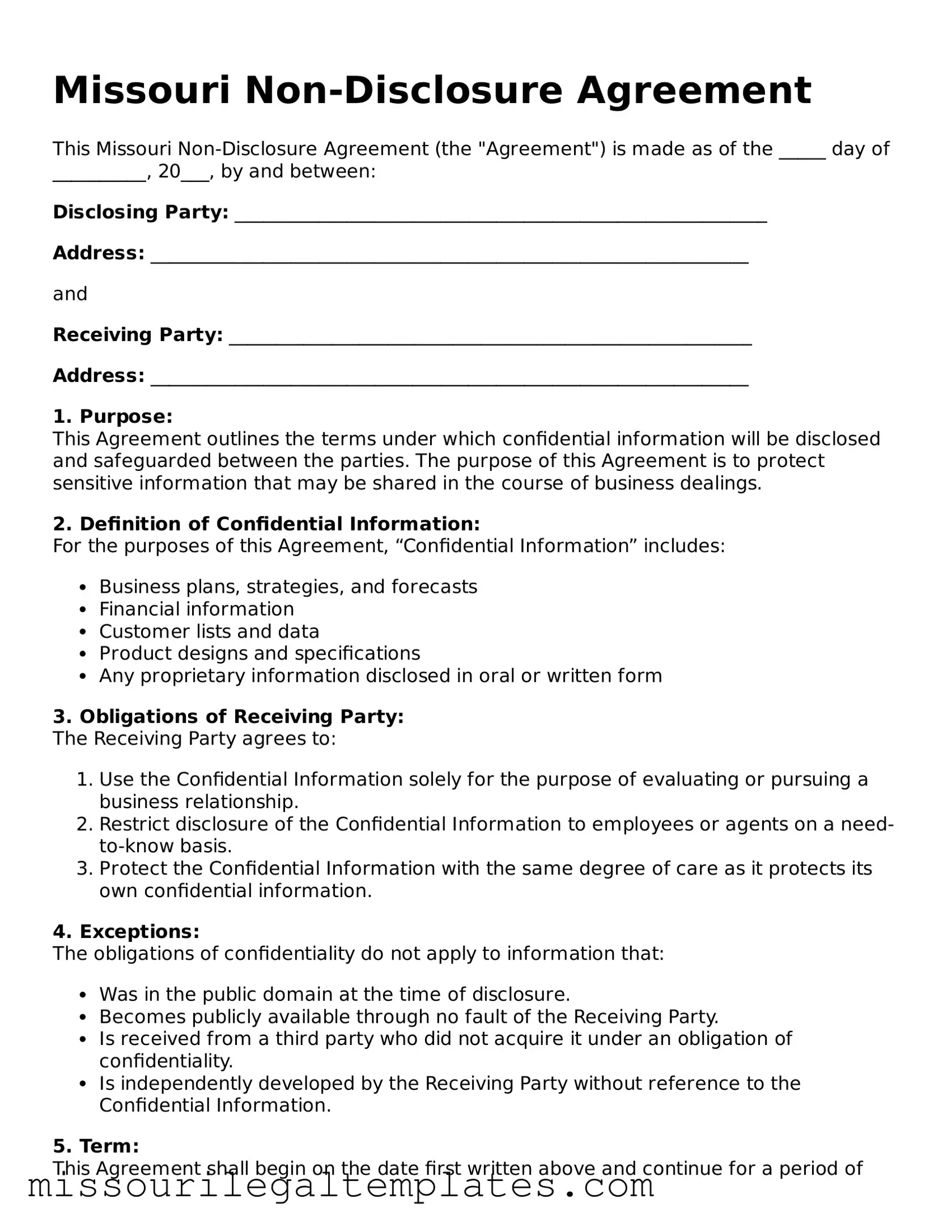Missouri Non-Disclosure Agreement
This Missouri Non-Disclosure Agreement (the "Agreement") is made as of the _____ day of __________, 20___, by and between:
Disclosing Party: _________________________________________________________
Address: ________________________________________________________________
and
Receiving Party: ________________________________________________________
Address: ________________________________________________________________
1. Purpose:
This Agreement outlines the terms under which confidential information will be disclosed and safeguarded between the parties. The purpose of this Agreement is to protect sensitive information that may be shared in the course of business dealings.
2. Definition of Confidential Information:
For the purposes of this Agreement, “Confidential Information” includes:
- Business plans, strategies, and forecasts
- Financial information
- Customer lists and data
- Product designs and specifications
- Any proprietary information disclosed in oral or written form
3. Obligations of Receiving Party:
The Receiving Party agrees to:
- Use the Confidential Information solely for the purpose of evaluating or pursuing a business relationship.
- Restrict disclosure of the Confidential Information to employees or agents on a need-to-know basis.
- Protect the Confidential Information with the same degree of care as it protects its own confidential information.
4. Exceptions:
The obligations of confidentiality do not apply to information that:
- Was in the public domain at the time of disclosure.
- Becomes publicly available through no fault of the Receiving Party.
- Is received from a third party who did not acquire it under an obligation of confidentiality.
- Is independently developed by the Receiving Party without reference to the Confidential Information.
5. Term:
This Agreement shall begin on the date first written above and continue for a period of _____ years, unless terminated earlier by either party with _____ days written notice.
6. Governing Law:
This Agreement shall be governed by and construed in accordance with the laws of the State of Missouri.
7. Signatures:
The parties hereto have executed this Non-Disclosure Agreement as of the date first above written.
Disclosing Party Signature: ________________________________________
Date: _________________________
Receiving Party Signature: ________________________________________
Date: _________________________
